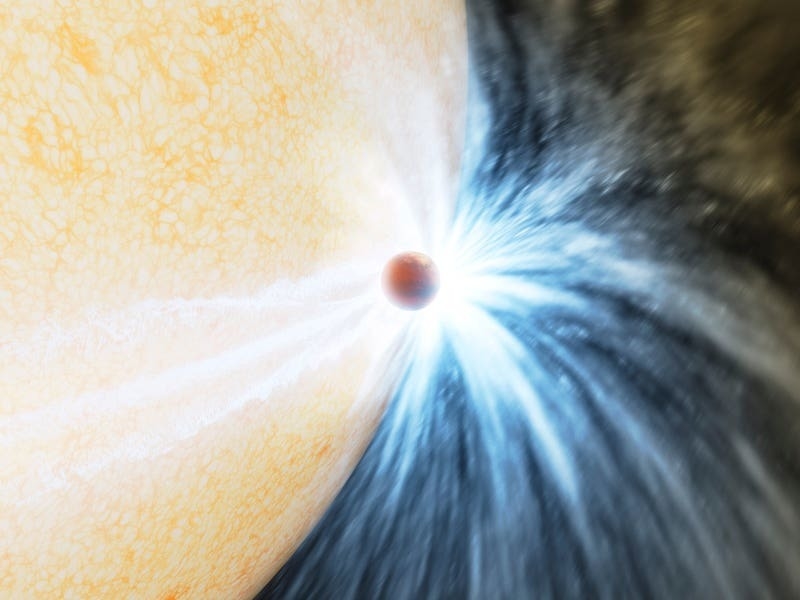Scientists have caught a star in the act of swallowing a planet whole.
Astronomers on Wednesday reported their observations of what appeared to be a gas giant around the size of Jupiter or bigger being eaten by its star.
The sun-like star had been puffing up with old age for eons and finally grew so big that it engulfed the close-orbiting planet.
“If it’s any consolation, this will happen in about five billion years,” said co-author Morgan MacLeod of the Harvard-Smithsonian Centre for Astrophysics.
The galactic feast happened between 10,000 and 15,000 years ago near the Aquila constellation when the star was around 10 billion years old.
There was a swift, hot outburst of light, followed by a long-lasting stream of dust shining brightly in cold infrared energy, the researchers said.

Massachusetts Institute of Technology researcher Kishalay De spotted the luminous outburst in 2020 while reviewing sky scans taken by the California Institute of Technology’s Palomar Observatory.
It took additional observations and data-crunching to unravel the mystery: instead of a star gobbling up its companion star, this one had devoured its planet.
Given a star’s lifetime of billions of years, the swallow itself was quite brief — occurring in essentially one fell swoop, said Caltech’s Mansi Kasliwal, who was part of the study.
She led a team in 2010 that used the Hubble Space Telescope to identify the star Wasp-12 in the process of eating its planet.
“This is a different sort of eating. This star gobbled a whole planet in one gulp,” she said. “In contrast, Wasp-12 b and the other hot Jupiters we have previously studied are being delicately licked and nibbled.”
Astronomers do not know if more planets are circling this star at a safer distance. If so, Mr De said they may have thousands of years before becoming the star’s second or third course.
Now they know what to look for, the researchers will be on the lookout for more cosmic gulps. They suspect thousands of planets around other stars will suffer the same fate as this one did and, eventually, so will our solar system.
“All that we see around us, all the stuff that we’ve built around us, this will all be gone in a flash,” Mr De said.






